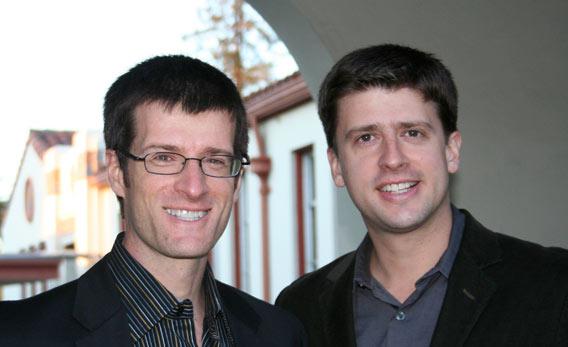Below is an excerpt from The Myth of the Garage and Other Minor Surprises, a new book by Dan and Chip Heath that launches today. You can get the book free on Amazon or B&N.
You—sitting right there, reading this article—you’re an avatar in Second Life. You work a Second Life job, earning Linden dollars. You have blue hair and a serpentine tail, and you’re dating an androgynous digital skateboarder named Rikki. Also, you are a ninja. Life is great.
At least, that’s the way things were supposed to unfold. In 2006, the future was Second Life. Business Week put Second Life on the cover. American Apparel, Dell, and Reebok, among many others, rushed to build virtual storefronts. Reuters even created a full-time Second Life bureau chief. People rushed to sign up and create their own avatars. Blue hair and Linden dollars were the future.
Looking back, the future didn’t last long. By the end of 2007, Second Life was already losing its fizz. “Businesses are shuttering in Second Life, it seems, because no one is using them,” wrote Morgan Clendaniel in a brutal piece in GOOD magazine. “There were never any employees at stores like Dell and Reebok when I visited, nor were there any customers. But that wasn’t that shocking because, for the most part, there seems to be no one in Second Life at all.”
Today, Second Life limps along. In the first half of 2011, the company reported that an average of about 1 million users logged in every month—which, you have to admit, is about 999,990 more than you expected. But during this same period, Facebook averaged roughly 500 million logins per month.
How did we misread the future so badly? Mind you, this Second Life hype didn’t involve distant, sci-fi predictions about the future. (“Someday we’ll all commute to the moon using unisex RocketCrocs!”) This was just five years ago. We were just months away from the iPhone.
After enduring a lifetime of mega-fads that flame out—the Apple Newton and PointCast and the Segway—why are we so quick to extrapolate a few data points into a Dramatic New Future? Well, here’s the frustrating part: Sometimes the Dramatic New Future arrives, exactly as promised. The mega-hyped Internet? Yep, worked out OK. Ditto Google and Facebook and iPods and iPhones.
This predictive crapshoot is rough on business leaders—your employees are going to bug you, every time, to greenlight the corporate blog. Or the storefront in Second Life. Or the special on Foursquare. Which efforts are worth it? How can you know, for sure, in advance?
Well, you can’t know for sure. You just can’t. As Yogi Berra said, “It’s tough to make predictions, especially about the future.” But in our experience, there’s one tool that has proven useful in separating the YouTubes from the Segways. It’s adapted from Clay Christensen’s The Innovator’s Solution, and it hinges on, of all things, building a better milkshake.
Second Life Vice Capades: Virtual Hooker (VIDEO)
Christensen asks us to imagine a group of marketers at a fast-food restaurant who want to sell more shakes. As they comb the customer data for insight, they discover something interesting: Most milkshakes are sold to early-morning commuters who buy a single milkshake and nothing else. Why milkshakes?
These commuters, according to Christensen, are “hiring” milkshakes to do a job for them: to supply a breakfast that is filling and nonmessy and cupholder-compatible. So to sell more milkshakes, the marketers don’t need to create a more delicious milkshake. Deliciousness isn’t really in the job description. Rather, the shakes need to be an ideal commute co-pilot. (If only having a milkshake in the car would let us use the HOV lane …)
So the restaurant’s marketers, inspired, create a self-serve milkshake lane to speed up the morning transaction. They add tiny, straw-suckable chunks of fruit to the shake, which make it last longer and add variety to the dreary commute. These tweaks made the milkshake a more useful “employee,” and sales improve. (Note that Christensen tells this milkshake story as a disguised version of an actual project he did, which apparently had nothing to do with milkshakes. But you get the point.)
So when you evaluate the next big thing, ask the Christensen question: What job is it designed to do? Most successful innovations perform a clear duty. When we craved on-the-go access to our music collections, we hired the iPod. When we needed quick and effective searches, we hired Google. And looking ahead, it’s easy to see the job that Square will perform: giving people an easy, inexpensive way to collect money in the offline world.
But what “job” did Second Life perform? It was like a job candidate with a fascinating résumé—fluent in Finnish, with stints in spelunking and trapeze—but no actual labor skills. The same was true with the Segway. No one was interested in employing a $5,000 walk-accelerator. (Though, to be fair, Segway eventually got a part-time job saving tourists from exercise.)
What about the Apple Newton, the first widely hyped PDA back in the 1990s? It was clearly applying for the right job—to give us mobile access to our calendars and to-do lists and such. But it was a lousy employee, with notoriously poor handwriting recognition and a limited attention span (from low battery life). PalmPilot got the job a few years later.
If the Christensen test alone could predict the future, then the two of us (along with Christensen) would be the richest venture capitalists of all time. It’s not a perfect predictor. But by our count, Christensen’s test calls correctly about a half-dozen of the big technology hype cycles of the last 20 years. At a minimum, it provides some protection against over-optimism. Think of it as a tinfoil hat to insulate you from the nuttiest predictions.
